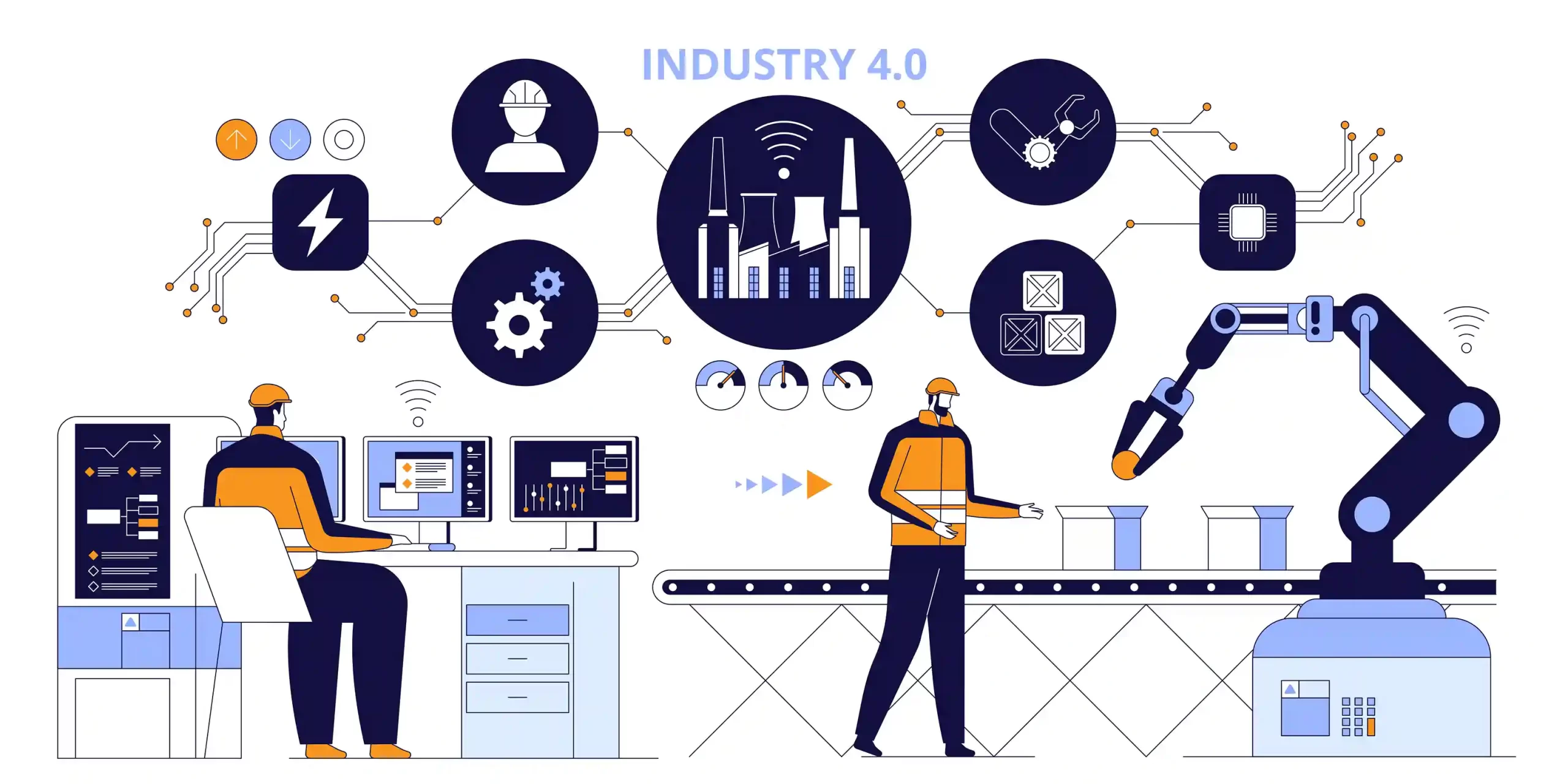AI-Driven Manufacturing: Opportunities and Challenges Ahead
Author: Inza Khan
21 August, 2024
The integration of Artificial Intelligence (AI) and Machine Learning (ML) is no longer a futuristic concept—it’s a present reality that’s changing the manufacturing sector. Whether you’re a small-scale producer looking to streamline operations or a large enterprise aiming to maintain a competitive edge in a global market, understanding the potential of AI and ML in manufacturing is important. Join us as we unpack the present and future of smart manufacturing and how you can benefit from it.

The Rise of AI and ML in Manufacturing
The Fourth Industrial Revolution, or Industry 4.0, has ushered in a new era of smart manufacturing. At the heart of this revolution are Artificial Intelligence and Machine Learning technologies, which are enabling manufacturers to optimize production processes, predict and prevent equipment failures, enhance quality control, improve supply chain management, and reduce energy consumption and waste. As these technologies continue to evolve, their potential to transform the manufacturing landscape grows exponentially.
Key Applications of AI and ML in Manufacturing
Autonomous Mobile Robots (AMRs)
AI-powered autonomous mobile robots are revolutionizing material handling and logistics within manufacturing facilities. These robots can navigate complex factory floors autonomously, adapting to changes in their environment. AMRs can work alongside human workers, enhancing safety and efficiency, and are capable of performing tasks such as inventory management, parts delivery, and even some assembly operations. Companies like Amazon Robotics and Fetch Robotics are at the forefront of this technology, developing sophisticated AMRs that are transforming warehouse and manufacturing operations.
Digital Twins
One of the most exciting advancements in AI and ML for manufacturing is the concept of digital twins. A digital twin is a virtual replica of a physical product, process, or system that can be used for real-time monitoring and simulation of manufacturing processes, testing and optimizing production scenarios without disrupting actual operations, and predicting performance, and identifying potential issues before they occur in the real world. For example, General Electric uses digital twins for its wind farms, creating virtual models of each turbine. This allows them to optimize performance, predict maintenance needs, and even test new designs virtually before implementing them in the real world.
Natural Language Processing for Documentation and Knowledge Management
Advanced natural language processing (NLP) is being used to improve documentation and knowledge management in manufacturing. NLP systems are capable of automatically generating and updating technical documentation based on design changes and production data, creating intelligent chatbots that can assist workers with technical queries on the factory floor, and analyzing safety reports and maintenance logs to identify trends and potential issues. IBM’s Watson, for instance, has been used in manufacturing settings to process and analyze vast amounts of unstructured data, helping to improve decision-making and knowledge sharing across organizations.
Generative Design
Artificial Intelligence is also transforming product design through generative design techniques. This approach explores all possible design permutations, generates optimal designs based on specific constraints, and produces designs that are often lighter, stronger, and more efficient than human-designed alternatives. Airbus used generative design to redesign aircraft partition walls, resulting in components that were 45% lighter but just as strong as the original.
Reinforcement Learning for Process Control
Reinforcement learning, a type of machine learning, is being applied to complex process control in manufacturing. The AI system learns optimal control strategies through trial and error in a simulated environment, can handle multi-variable, non-linear processes that are difficult to control with traditional methods, and continuously adapts and improves its control strategies based on real-time data. Google has successfully applied reinforcement learning to optimize cooling systems in its data centers, reducing energy consumption by 40%. Similar approaches are being explored in various manufacturing processes, from chemical plants to steel production.
Challenges and Future Outlook
While the benefits of machine learning and AI in manufacturing are clear, there are challenges to overcome. These include ensuring data quality and availability, as ML models require large amounts of high-quality data, which can be challenging to collect and maintain. There’s also a skills gap, with a shortage of professionals who have the necessary expertise to implement and manage AI and ML systems in manufacturing settings. The initial investment required to implement these technologies can be significant, and many manufacturers struggle to integrate new AI and ML technologies with their existing legacy systems.
Despite these challenges, the future of AI and ML in manufacturing looks promising. As technologies continue to evolve and become more accessible, we can expect to see more widespread adoption across the manufacturing sector, increased collaboration between humans and AI systems, the emergence of new business models and revenue streams, and continued improvements in efficiency, quality, and sustainability.
Conclusion
As we move further into the era of smart manufacturing, companies that embrace Artificial Intelligence and Machine Learning technologies and successfully navigate the challenges of implementation will be best positioned to thrive in the factories of the future. This is where Xorbix Technologies comes in. As a leading provider of AI and ML solutions for the manufacturing sector, Xorbix is at the forefront of this technological revolution. We offer a comprehensive suite of services designed to help manufacturers harness the power of AI and ML.
Read more on related topics:




